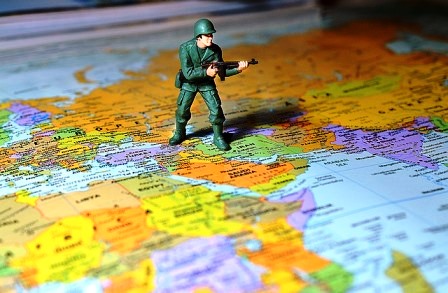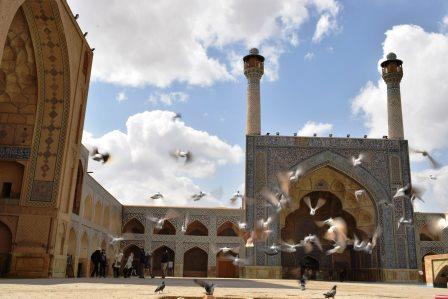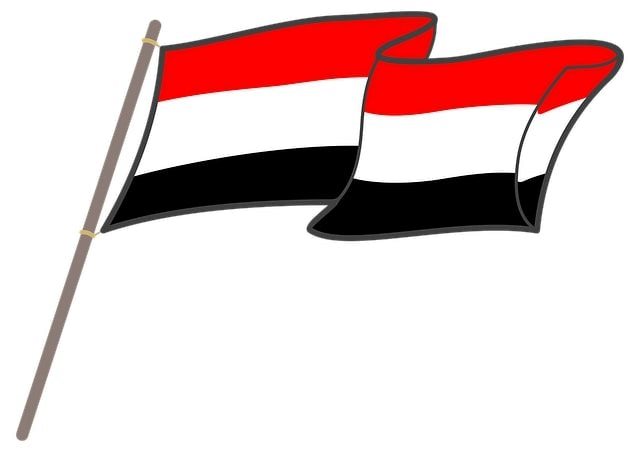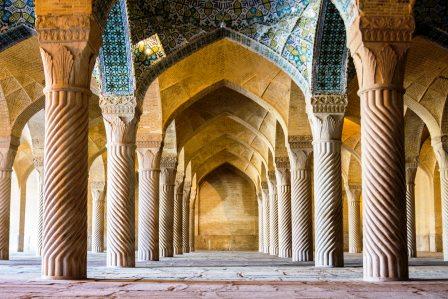Breaking
- MENU

The geopolitical dynamics in West Asia and North Africa (WANA) is such that it allows global powers to intervene either on their own impulsively or on behalf of one or the other regional actors. This has been one of the defining characters of regional politics since 1798 when the French army under Napoleon Bonaparte invaded and defeated the Egyptian rulers. Since the end of the Second World War, the region became a ground for proxy wars between the United States (US) and the Union of Soviet Socialist Republics (USSR). The end of Cold War was expected to herald the era of unipolar politics revolving around the US.
But this prognosis was proved wrong with the rapid rise of China and the resurgence of post-Soviet Russia as well as the emergence of a group of rising powers – India, Japan, Germany, Brazil and South Africa. While a number of local, regional, global, geopolitical and geo-economic developments can be cited as factors responsible for the evolution of a multipolar world, the pre-eminence of the US as the strongest global power remained intact. This was true for WANA as well.
By 2018, however, the world continued to witness a perceptible decline of the US as the lone superpower, and the emergence of Russia and China as the vanguards of a multipolar world became more evident. This was most clearly visible in the WANA region, where Russia, after its entry into the Syrian theatre in September 2015, consolidated its position by tipping the Syrian civil war in favour of the Bashar-al-Assad regime as well as leading the peace process for a political solution.
President Vladimir Putin’s ability to attract countries of the region such as Syria and Iran as well as the allies of the US such as Saudi Arabia, Egypt, Israel and Turkey to gain close cooperation with Moscow on domestic problems and regional conflicts, underscored the growing profile of Russia in WANA. At the same time, China has emerged as a significant trading partner and foreign investor in the region, underlining its growing global economic prowess and the comparative decline of the US and Europe in terms of economic engagements with the region. Nonetheless, the single most important development which highlighted withdrawal symptoms of the US from regional politics was the December 19, 2018, decision to withdraw the remaining American troops from Syria.
The US has been showing withdrawal symptoms, vis-à-vis its global engagements, since it was hit by the economic recession in 2007-08. President Barack Obama in his first presidential term (2008-12) promised to withdraw US troops from Iraq and Afghanistan, terming it as one of the contributing factors for the crisis facing the US. Though the sudden eruption of public anger in the form of the Arab uprisings (beginning December 2010 in Tunisia that soon engulfed the whole region), compelled the US to delay the inevitable, Obama fulfilled his campaign promise by completely withdrawing US troops from Iraq in 2011.
While this later proved to be a mistake, the palpable shift away from WANA was evident during the second term of the Obama presidency (2012-16), with the US policy of “pivot to Asia.” Obama was forced to commit troops to Iraq after the rise of the Islamic State (ISIS) in 2014; he nevertheless remained non-committal to intervene in and influence domestic and regional developments to change the course of events in favour of the US allies such as Egypt, Israel and Saudi Arabia.
The Obama administration not only ignored pleas of allies to chase a nuclear agreement with Iran, but also put the onus on the US allies to do more in terms of sharing the burden to ensure security and stability in the region. Obama, therefore, left three important legacies in the region – one, the successful signing of Joint Comprehensive Plan of Action (JCPOA) between the P5+1 countries (the US, Russia, China, UK, France and Germany) and Iran in July 2015; two, the unsuccessful effort to revive the Middle East Peace Process to resolve the Israeli-Palestinian conflict and three, and most importantly, of being non-interventionist or non-committal in dealing with the Arab uprisings, especially in Egypt, Syria and Yemen.
It contributed to the regional actors becoming more assertive in their conduct of foreign policy such as Saudi Arabia and sought international partnerships to strengthen domestic and regional security, while Russia came in as a willing partner.
President Donald Trump who came to power with the promise of reversing the Obama legacy has thus far kept the international community guessing about his agenda by giving confusing signals. While the unilateral withdrawal from the JCPOA underscored the desire to undo the Obama legacy, and please allies such as Saudi Arabia and Israel, the decision to withdraw from Syria underlined the continuing withdrawal symptoms afflicting US foreign policy. Trump has pursued his convoluted policies, sometimes even at the cost of antagonising his advisers, the State Department, the Pentagon and even the Congress.
His unpredictable nature and rash decision making has equally alienated friends and foes of the US in the region. While the long-term ramifications of Trump’s decisions are yet to be seen, these have certainly intensified the regional geopolitical struggle, sharpened the rivalries and have created a serious vacuum in terms of a credible and effective international arbitrator.
Among the most important decisions that came in 2018 was the shifting of the US embassy in Israel from Tel Aviv to Jerusalem on May 14. This was a follow-up to the announcement made on December 16, 2017. Days before this, on May 9, Trump announced that the US has decided to withdraw from the JCPOA. This had been anticipated. Trump had in fact made this an important agenda in his campaign in 2016. Since his inauguration in January 2017, the president had on several occasions stated the need to censor Iran for violating the soul of the nuclear agreement and for pursuing an expansionist foreign policy. The third most important decision came in the wake of the killing of Saudi journalist and Washington Post columnist Jamal Khashoggi on October 2 inside the Saudi consulate in Istanbul.
Despite an international outcry, sustained pressure from Turkey and outrage of the US Congressmen and Senators to censor the Kingdom and Crown Prince Mohammed bin Salman, Trump did not oblige. Giving a clean chit to Mohammed Bin-Salman, he refused to impose any sanctions on Saudi Arabia. The fourth prominent decision which again was not entirely unexpected but came at an unpredictable time and created a serious uproar in the US administration, was the complete withdrawal of troops from Syria.
The decision on the withdrawal from JCPOA elicited a strong international response. While Israel and Saudi Arabia rejoiced at the prospect of Iranian isolation, others including signatories to the deal were cautious. Russia, China, the UK, France and Germany have not followed suit. Germany and France, who were looking to get some lucrative business deals in Iran, even tried to convince Trump to go slow on sanctions but failed.
Eventually, the US imposed sanctions on Iran on August 7, with more than 700 individuals and entities – including major banks, oil exporters and shipping companies – affected. Subsequently, Russia and China clarified that they wish the Iranian nuclear deal to continue and stated their willingness to work with other international actors to find a way to overcome the US sanctions.
The economic sanctions are expected to cripple Iran’s foreign trade and are targeted at major private and government entities including in the energy, aviation, shipping, defence, banking and financial sectors. The stated objectives of the US administration to withdraw from JCPOA and impose sanctions on Iran is to prevent Iran from attaining nuclear weapon capability and stop its “destabilizing activities,” in the region. The deal wishes to cripple the Iranian economy, counter its growing influence in the region and to placate regional allies such as Israel and Saudi Arabia.
The most important entity of the Iranian regime that has been brought under sanctions is the Iranian Revolutionary Guard Corps (IRGC) which is considered to be the mainstay of Iranian influence in the region. Consequently, Iran’s oil exports have been seriously affected and reports suggest that many international corporations that were willing to invest in Iran have been forced to reconsider or are hesitant to pursue business with Iran. Though one has to wait longer to see how developments bear out, what is clear at this stage is that Iran has strengthened its resolve to attain nuclear power, acquire strategic weapons, and expand regional influence and further international partnerships.
Another significant US decision which evoked a strong international response was the shifting of the US embassy in Israel from Tel Aviv to Jerusalem. The Department of State justified the relocation stating that “Moving our Embassy is not a departure from our strong commitment to facilitate a lasting peace deal; rather it is a necessary condition for it. We are not taking a position on final status issues, including the specific boundaries of Israeli sovereignty in Jerusalem, nor on the resolution of contested borders.” Notwithstanding the stated objective, this was widely perceived as a pressure tactic on the Palestinians.
The response was violent in the Palestinian territories, but otherwise largely condemned as partial and not commensurate with the US’ status as mediator in the conflict. Saudi Arabia, one of the US allies in the region, led the global Muslim response and emphasised that any change in the status quo in Jerusalem without a final status agreement is not acceptable to the Palestinians, Arabs and Muslims.
The international response to the move was prudent. Except for Israel and some other countries, none agreed with the US move as inevitable and a precursor to final status solution. A UN General Assembly resolution in December 2017 condemning the US move and demanding its members to not locate diplomatic missions in the Holy City was adopted by an overwhelming majority of 128 in favour, 9 against and 35 abstentions. Since the Palestinian Authority and its President Mahmoud Abbas refused to accept the administration’s demand to come to the negotiating table and accept the “deal of the century” offered by Trump, the president decided to take further punitive measures by asking the Palestinian mission in Washington to close down and stopped funding of the United Nations Relief and Works Agency for Palestine Refugees in the Near East (UNRWA).
This has, however, not forced the Palestinians to accept the “grand deal” a conditional peace programme on US and Israeli terms. On the contrary, the move is likely to evoke hatred against the US and Israel, galvanise global Muslim opinion and more importantly, damage the US’ status as an impartial mediator. This will push the Palestinian Authority and others to bring in more international actors such as Russia, China and the EU to play a more active role in mediating the conflict, who might not miss an opportunity to challenge US dominance in WANA.
The Khashoggi murder was another important development which forced the US to respond and eventually showed that the Trump administration is unlikely to alter relations with Saudi Arabia despite an international outcry. While the issue significantly affected the already fragile international image of Saudi Arabia and Crown Prince Bin-Salman and created tensions between Ankara and Riyadh, it did not significantly affect US-Saudi strategic ties. In the aftermath of the killing, however, Turkey was able to negotiate and bargain with the Trump administration and ease bilateral tensions. Turkey also sought a favourable solution for the problem it faces vis-à-vis Kurds in northern Syria.
Turkey eventually released the US pastor Andrew Brunson –under detention in Turkey for over two years – in October. On December 19, Trump announced plans for the US withdrawal of its remaining 2,000 troops from northern Syria. This was claimed to be a major victory by Ankara, though the weight of its actual ramifications made President Erdogan more cautious in his approach. Subsequently, Trump has also been forced to review the decision and has stated that the withdrawal will be a slow and gradual process.
The most significant beneficiary of the US’ final exit from Syria is Russia. While the Kurds have lost a significant benefactor, they are now likely to seek an understanding with Moscow to achieve their political objectives. Iran and the Bashar al-Assad regime are already closely cooperating with Russia and Turkey, which was thus far coordinating with both Washington and Moscow, and is likely to seek closer coordination with Russia not only on Syria but also on other important regional and global issues.
Arguably, the decision is the single most significant sign in recent times, highlighting the decreasing appetite of the US leadership to commit forces in WANA, despite the apparent military might and the presence of large-scale military bases in the region.
Russia
Russia has become an active player in the Middle East, especially since its September 2015 military intervention in Syria which signalled its re-emergence as a key player in the regional geopolitics. Its subsequent diplomatic initiative to resolve the Syrian crisis arguably reflects the recalibration of Kremlin’s policy towards a region from where it had largely withdrawn since the beginning of the 1990s. In 2018, Moscow’s policies in many ways signalled the continuity of the plan to maintain its strategic space in Syria, building on ties with regional actors such as Iran, Saudi Arabia, Turkey, Israel and Egypt, in the light of policies pursued by President Trump in the region.
More importantly, the dynamism of President Putin to bring on France and Germany along with Turkey and Iran onto the regional dynamics can be viewed as an important initiative. In short, Moscow has attempted a solution to the Syrian conundrum, deepen its cooperation with Iran, step up ties with Israel, Egypt and Iraq, formulate a working relationship with the Arab countries, and restore ties with Turkey.
Iran has emerged as one of the major regional actors to hedge its bets on Russia to pursue its regional interests. Until 2017, the Hassan Rouhani government was hesitant and pursued a policy of issue-based cooperation. However, this changed after the US withdrawal from the JCPOA and the subsequent imposition of economic sanctions. Kremlin, however, has refused to confine its regional policy to one regional actor and has pursued relations with Iran’s arch-rivals including Israel and Saudi Arabia.
This is viewed with some suspicion in Tehran. For Russia, it is not only the global geopolitical competition but also the global energy market that underlines its interests in WANA and Iran is seen as a competitor in the world energy market. Russian oil companies are interested in the Iranian energy sector and would like to take full advantage of the vacuum left because of major Western oil companies leaving Iran due to US sanctions. In 2018, Russia’s policy approach towards Iran has been somewhat balanced and cautious.
Russia would perhaps like Iran to remain as an observer country. Iran is working on creating an alternative regional framework to deal with its isolation. In the present scenario, Turkey and Russia are important partners, keeping the geography in mind. In Syria, Russia and Iran are compelled to be partners despite their differences. In future, differences between Russia and Iran are likely to increase in Syria, as each one would look for a bigger pie in the economic incentives and strategic space in Syria.
China
China’s relations with WANA have grown significantly in recent decades. This is more palpable in the case of the Persian Gulf which has emerged as the primary source of energy imports for China as well as a major destination for Chinese exports and investments. Nonetheless, trade and business between other WANA countries and China too have witnessed exponential growth. This is evident from the fact that in 2017-18 China’s trade with WANA region was US$239.5 billion, which is more than the combined trade of both the US and Russia with the region. Trade, economy and investments are thus the drivers of the growing Chinese engagements in WANA.
China has also significantly invested in the regional countries to promote its flagship global connectivity project, the Belt and Road Initiative (BRI), first propounded by President Xi Jinping in 2013. Beijing has received an enthusiastic response from West Asian countries for the BRI. China sees the WANA region as a crucial link for the BRI not only because of its geostrategic location but also because of its potential as the global trade and economic hub.
The growing trade and economic partnerships between China and WANA became amply clear during the eighth China-Arab State Cooperation Forum (CASF) held in Beijing in July 2018. The opening ceremony of the ministerial meeting was attended by Xi Jinping and a number of trade agreements were signed. During the CASF, China announced that it will provide a fund of US$23 billion for development projects in the Arab countries.
Xi Jinping while addressing the ministers from Arab states underlined that the stability in the region is linked to economic development and that China through the BRI is willing to partner with the Arab countries to bring development and stability. The CASF underlined the growing partnerships between Beijing and Arab capitals with special focus on trade, investment and business. It acquires more importance in the light that Xi Jinping had visited Egypt, Saudi Arabia and Iran in January 2016 and had received significant attention for the ability to balance among regional rivals.
The eighth CASF meeting was followed by Xi Jinping’s visit to the UAE highlighting the growing significance of the Emirates as a major actor in the region. China-UAE relations have in fact grown significantly in recent times. While the UAE is the re-export hub for Chinese trade in WANA, the bilateral trade too has increased significantly. In 2017, for example, China-UAE bilateral trade was US$ 53 billion and is estimated to have increased to US$ 58 billion in 2018. The UAE International Investment Council (UAEIIC) has predicted that the bilateral trade will reach US$70 billion by 2020. The number of Chinese companies and expatriates working in the UAE has also witnessed exponential growth with nearly 230 Chinese companies with operations across the region based in the Jabel Ali port.
At the same time, hundreds of Emirati companies working in the fields, such as renewable energy, health and financial services, have begun operations in China. According to Jonathan Fulton, the bilateral trade between the two countries has “provided a foundation for increased cooperation across other areas” including politics and cultural affairs, security and military cooperation, counter-terrorism and maritime security.
Despite the growing trade and economic ties, China has kept away from the political turmoil and regional rivalries. Unlike Russia, which has politically and militarily invested in the region, China, despite a significantly soft military presence and increasing political engagement, has maintained a degree of neutrality and non-involvement in domestic and regional politics. While this is a deliberate attempt at not being bogged down by getting involved in regional turmoil, it has also provided Beijing with the possibility of simultaneously engaging with regional rivals including Israel, Iran, Saudi Arabia, Turkey and Egypt
It has kept a low profile in major theatres of conflict including Syria, Yemen and Libya as well as the Israeli-Palestinian conflict. However, its reaction to some of the major decisions by the US pertaining to the Middle East underlines that it is not entirely oblivious of the political developments.
Firstly, on the issue of the shifting of the US embassy from Tel Aviv to Jerusalem, China expressed concern saying that it will lead to “flare-up of regional tensions.” Further, reacting to the US announcement in December 2017, the spokesperson of Chinese Ministry of Foreign Affairs, Gen Shuang, reiterated China’s support for the two-state solution in accordance with the relevant UN resolutions. Arguing that China supports the establishment of the Palestinian state based on 1967 boundaries and with East Jerusalem as its capital, he stated that,
“China firmly supports and advances the Middle East peace process. We support the just cause of the Palestinian people to restore their legitimate national rights and stand behind Palestine in building an independent, full sovereignty state along the 1967 borders with East Jerusalem as its capital. We call on all parties to remain committed to resolving disputes through negotiations and promoting regional peace and stability in accordance with the relevant UN resolutions.”
Significantly, countries like India and Russia took a similar view of the matter and expressed their support for a just resolution of the Palestinian conflict and voted against the US move in the UNGA.
Secondly, on the announcement of US withdrawal from the JCPOA, China reiterated support to the JCPOA and finding a way to avoid US backlash without compromising on trade and business relations with Iran. Analysts believe that China and Russia can find a way to work together with the EU and other countries, to work around the US sanctions to engage with Iran as they had done in the past.
Iranian Foreign Minister Javad Zarif, soon after the US announcement of withdrawal from the JCPOA, visited Beijing and other capitals to shore up support for the JCPOA. None of the other signatories including China have yet withdrawn from the nuclear deal, underlining that they are still working to find a way to keep the deal afloat. Notably, China and Russia have again been on the same page and have on occasions expressed views underlining that the two can come together in support of Iran not only because of their economic and political engagements with Tehran but also to further challenge the US’ global dominance.
Thirdly, on the question of withdrawal from Syria, China has been sceptical of the US action. Though it has not reacted to Trump’s December 19 announcement, Beijing would not be worried about the outcome as it supports the Russia-led military and political process in Syria. China, like Russia, sees this as a positive development. Even on other issues such as Libya, Yemen and Iraq, China has been able to maintain its presence without committing significant resources. It has benefitted from the US military presence and the security provided by the US in the region to expand its trade and economic ties. At the same time, China is not willing to replace the US that has shown signs of fatigue and withdrawal symptoms in WANA.
From the regional perspective, there are high expectations from China. China’s footprint in the region has grown over the years. A case in point is its increasing cooperation with Saudi Arabia at one end and Iran at the other. On the issue of how deep China should be involved in regional affairs, views within China are divided. Some are of the opinion that China has limitations and it can at best play a role of the bridge; it should give ideas, concepts and not get too involved as long as the US is present as the dominant actor. However, others believe that China should play a more active role. The fundamental challenge for China is to cope with difficult US-China relations and this is likely to impact China’s policies in the region as well. Beijing does not want to put its foot in the troubled waters of West Asia but it may have to change its position in due course of time.
The US, despite showing signs of withdrawal from WANA, remains the only external actor with a significant military presence in the region and the only superpower with the ability to influence the regional developments. Nonetheless, the lack of US willingness to continue its extensive military involvement in the region has been palpable with the decisions taken under the Obama and Trump administrations. This will not mean a complete withdrawal of the US from the region or it being replaced by other powers such as Russia or China, but it is likely that the countries of the region will shore up their own security and seek closer cooperation with Russia and China to compensate for lesser US military involvement. As a result, regional geopolitical tensions and power struggle will intensify. Nonetheless, the US policies can facilitate broader latitude for countries such as Russia and China as well as the European Union, to expand their politico-military engagements in WANA, as was visible through developments in 2018.
Note: This article was originally published in West Asia Watch: Trends and Analysis (IDSA, New Delhi) and has been reproduced with permission. Web Link
As part of its editorial policy, the MEI@ND standardizes spelling and date formats to make the text uniformly accessible and stylistically consistent. The views expressed here are those of the author and do not necessarily reflect the views/positions of the MEI@ND. Editor, MEI@ND: P R Kumaraswamy

Meena Singh Roy is a Research Fellow and heads the West Asia Centre at the Manohar Parrikar Institute for Defence Studies and Analyses (IDSA). She holds Ph. D., form Delhi University and her areas of specialization are Central Asia and West Asia. Before joining IDSA, she was a senior research scholar in the Department of African Studies, Delhi University. She was associated with the Institute of Commonwealth Studies, School of Oriental and African Studies and London School of Economics for her research work. In 2014, she was a visiting Research Fellow with the German Institute of Global and Area Studies (GIGA), Hamburg. Her publications include The Shanghai Cooperation Organization: India Seeking New Role in the Eurasian Regional Mechanism (2014). She has edited Changing Security Paradigm in West Asia: Regional and International Responses (2020, KW Publishers); Ideology, Politics and New Security Challenges in West Asia (Pentagon Press, 2018); International and Regional Security Dynamics: Indian and Iranian Perspectives (IDSA, 2009) and Emerging Trends in West Asia: Regional and Global Implications (Pentagon Press, 2014).

Md. Muddassir Quamar is an Associate Fellow in Manohar Parrikar Institute for Defence Studies and Analyses, New Delhi. He holds a Ph.D. in Middle East studies from Jawaharlal Nehru University and his doctoral thesis focused on social dynamics in Saudi Arabia in the context of the tensions between two seemingly non-harmonious trends; Islamization and modernization. He has a broader interest in Gulf societies, political Islam, Middle East geopolitics and India’s relations with the Middle East. He has co-authored two books India’s Saudi Policy: Bridge to the Gulf (Palgrave Macmillan, 2019) and Persian Gulf 2019: India’s Relations with the Region (Palgrave Macmillan, 2020). He is currently working on a manuscript on education reforms in Saudi Arabia. He has co-edited four anthologies, including Changing Security Paradigm in West Asia: Regional and International Responses (Knowledge World, 2020), Political Violence in MENA (Knowledge World, 2020), Islamic Movements in the Middle East: Ideologies, Practices and Political Participation (Knowledge World, 2019) and Contemporary Persian Gulf: Essays in Honour of Gulshan Dietl, Girijesh Pant and Prakash C. Jain (Knowledge World, 2015). His research papers have appeared in leading international journals such as Asian Affairs, Strategic Analysis, India Quarterly, Contemporary Arab Affairs, Digest of Middle East Studies, Journal of Arabian Studies and Journal of South Asian and Middle Eastern Studies. As part of his project in MP-IDSA, Dr. Quamar authored a monograph on Erdogan’s Turkey: Politics, Populism and Democratisation Dilemmas. Since 2018, he has served as the Book Review Editor for Strategic Analysis, the flagship journal of MP-IDSA published in association with Taylor & Francis. In May 2020, he edited an MEI Monograph Middle East Fights Covid-19: A Fact Sheet with contributions from students pursuing Masters in IR in JNU. He regularly contributes Op-Ed articles on developments in the Persian Gulf, Middle East and India’s relations with the region for Indian and international forums. In 2014-15, he was a Visiting Fellow at the King Faisal Center for Research and Islamic Studies, Riyadh. Dr. Quamar has been associated with the Middle East Institute, New Delhi, in various capacities since its foundation and serves as Associate Editor of its flagship journal, the Contemporary Review of the Middle East published by Sage, India.

Summary: Iran is battling the COVID-19 pandemic amidst limited resources, a weak economy and a diffi.....

Yemen has been ravaged by conflicts for decades and there seems to be no end to it. Due to the ong.....

In an exclusive interview to West Asia Watch, conducted by Dr. Meena Singh Roy, Dr. Bijan Khajehpour.....

As part of India’s outreach to North Africa, External Affairs Minister (EAM) Sushma Swaraj pai.....
